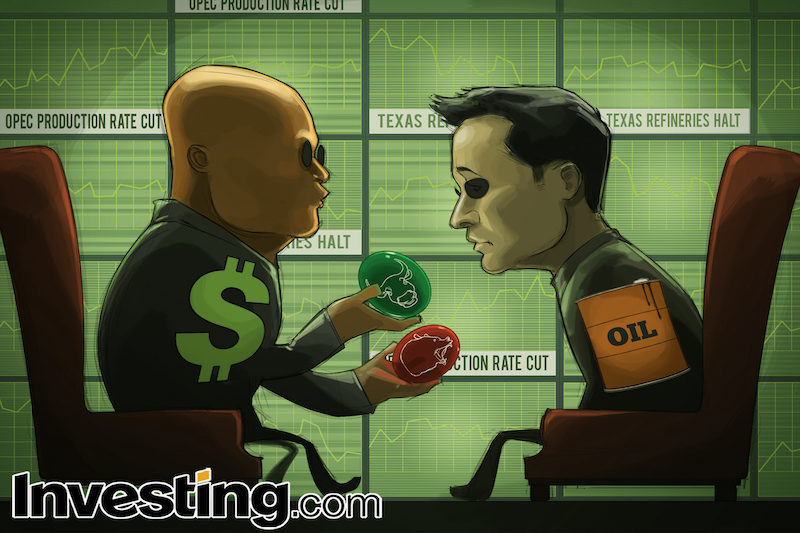By Geoffrey Smith
Investing.com -- Is oil’s recovery for real, or has the Texas freeze merely delayed a rude awakening? As so often, the answer is not so much whether the market is missing something, as whether it has gone too far, too fast.
Since late October, benchmark prices have risen 70%. That’s not unprecedented by any means, but what stands out is the lack of any meaningful correction in a period that now stretches back almost four months. That’s the kind of run that usually screams “overbought!”
Admittedly, the fundamentals have changed dramatically in that period. A whole string of vaccines has been first proven to be effective against Covid-19, then authorized and then distributed, every jab bringing forward the day when people will again travel more freely.
Secondly, the new administration in the U.S. is shepherding a $1.9 trillion stimulus package through Congress which is cheapening the dollar (bullish for oil prices) and likely to prop up consumer demand (also bullish). Even the administration’s plans to build out Green Energy are bullish in the short run: it takes a lot of diesel to get a wind farm built, after all.
Thirdly, Saudi Arabia and Russia have been able to keep their rivalry under control and have stuck to their pledged output cuts. In all, the so-called OPEC+ bloc is still withholding over 6 million barrels a day of oil production capacity in reserve. As a result, world stockpiles, which hit record levels as demand plummeted last summer, are due to be back at their five-year average by the middle of the year, according to the International Energy Agency’s latest monthly report.
The icing on the cake (and everywhere else in the U.S.) has been the week-long cold snap that knocked out Texan oil production, pipelines and refining.
Various reports suggest that a host of mechanical and other problems will prevent a quick return to normal: the restart for Motiva’s 607,000 barrel-per-day Port Arthur refinery will last 17 days, according to a regulatory filing by the company. Occidental Petroleum (NYSE:OXY) said on Monday it expected its oil and gas output to shrink about 4% over the whole first quarter, due largely to storm-related losses. Reuters reported on Monday that Texas producers will need another two weeks to restore output to pre-storm levels.
Analysts at Bank of America Merrill Lynch now see the combination of these factors pushing Brent as far as $70 by the end of the quarter.
Yet the temporary nature of the Texan problems should urge caution against chasing further gains in crude from here. U.S. oil output will not be down for long. And while shale drillers are currently still in cash conservation mode, the sight of prices around $70 would surely lead them to increase output again.
“I’ve learned sometimes if prices get high enough mindsets can change,” Robert Kaplan, president of the Dallas Federal Reserve Bank, told a conference on Monday. Kaplan said that even a return to U.S. output of 13 million barrels a day is possible, given enough price incentives.
Increases in U.S. shale output not only add to global output in in their own right, they also threaten the cohesion of the OPEC+ pact. While Saudi Arabia may balance its oil diplomacy with its need to mend fences with a new Democratic administration, Russia is typically much less inclined to lose market share to its biggest geopolitical bogeyman.
Already, reports have suggested that Russia will push for a big increase in output at next week’s monthly review of the OPEC+ production pact, where the bloc will set their output levels for April. Saudi Arabia will inevitably want to reverse a unilateral cut of 1 million barrels a day that it enacted to preserve a unity that was already cracking a month ago.
In its last monthly report, the IEA referred to what it said was a “fragile rebalancing” of the world market. Next week’s meetings should show just how fragile it is.
